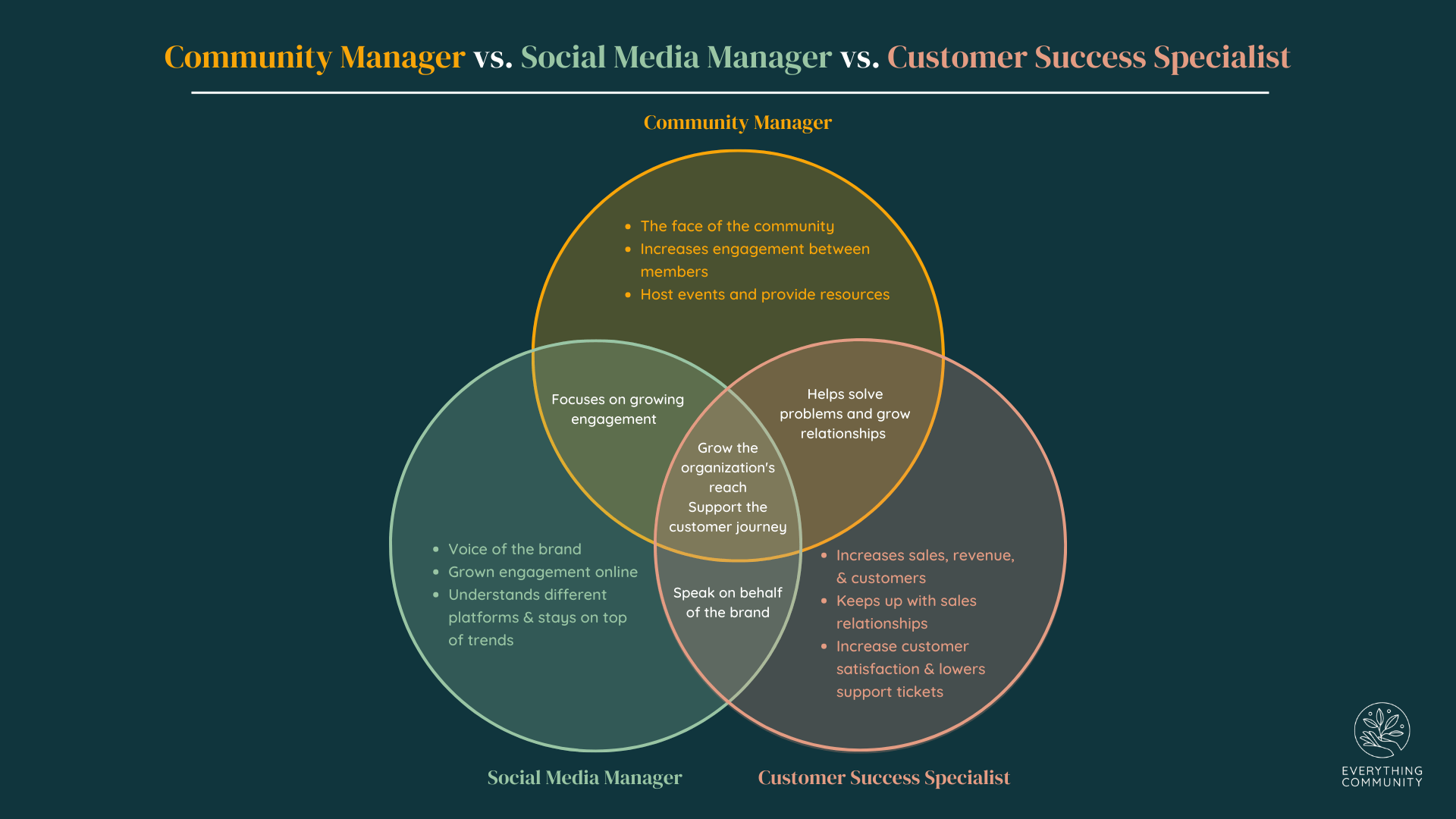Community 101

Why Community?
People trust people, especially those in our network. We seek meaningful connections with those around us, from gathering in groups over our hobbies to searching for product reviews.
Organizations can leverage their community to build authentic relationships with their customers. This leads to increased customer retention, brand loyalty, and revenue.
Community provides value.
Your community is the direct link to your customer base. You get the inside scoop on their wants, needs, and ideas for improving your product or service.
It’s a way to build one-to-one relationships with customers with the benefit of increased interactions, conversions, and sales.
Community builds trust.
🤝
We seek connections with others to find our sense of belonging in the world around us.
Community fosters this sense of belonging. We find our place in the communities created, developed, and nurtured by the brands we know and love.
What does a successful community look like?
A successful community is one where members are eager to participate by engaging with others, creating content, or sharing their experiences.
The key to a successful community lies in the ability to create a successful Community Growth flywheel.
No two communities are the same. We often get stuck on the concept of what our community “should” look like. This pulls our focus from community needs and how our members want to engage.
We’ve developed a community model to understand the different ways people engage with the communities they’re part of.
Often, communities acquire new members easily, but once they join their engagement flops. This is where Community Managers come in to support, uplift, and grow their communities.
community managers
Community Managers are the primary point of contact. They’re the key to building, growing, and sustaining a community.
We like to think of Community Managers as tour guides. They’re welcoming, helpful, and give you the lay of the land for success. They're the link between your experience as a member and the organization they represent.
Community Managers put people first. They love to connect and put lots of energy into building relationships. This means they’re in tune with the needs and wants of customers, stakeholders, and executives.
Community Managers focus on building brand presence and trust online and in-person through community support, content distribution, and engagement.

Social Media Manager vs. Customer Success Specialist vs. Community Manager
social media managers
Social Media Managers focus on brand promotion using social media channels. They understand effective strategies across social platforms to increase engagement and build an audience.
They develop short terms goals and use targeted campaigns to achieve these goals. Along with managing social accounts, they pull data, analyze it, and create reports for future reference.
Social Media Managers speak on behalf of the brand across various social media platforms.
Day-to-day:
- Build brand awareness and engage with users on social media platforms
- Deep understanding of social media platforms, content performance, and trends
- Plan, develop, and execute campaigns
- Reporting and analyzing social media performance
customer success specialists
Customer Success roles bridge the gap between customers and product support. They build trust by solving issues and listening to customer feedback.
They increase customer satisfaction by lowering support tickets. This role supports the sales department by managing leads and converting them to customers.
Day-to-day:
- Connects customers with support and increases customer satisfaction
- Handles issues, support requests, feedback, and task management
- Maintaining sales relationships and building trust with customers
- Managing accounts and client relationships
- Increase sales, revenue, and customers
community managers
Community Managers are the face of the community. They are tasked with increasing engagement and interaction among members of the community.
They onboard new members, provide resources, and host events for community members. They’re knowledgeable about the company in all aspects and can easily help community members.
Day-to-day:
- Focused on long-term brand strategy, positive public perception, and customer relationships
- Increasing interaction and engagement between members in-person and online
- Supporting key influencers and stakeholders
- Promoting company resources and events
- Onboarding members to the community
- Responsible for every step of the customer journey
Reasons to Build Community
We lean into three different use cases for community building – marketing, product innovation, and customer support.
marketing
Our buying decisions are an increasing reflection of who we are. We give ourselves certain personality traits when we pick one brand over another. These can be small day-to-day decisions like the laundry detergent we buy or larger investment purchases like the kind of car we drive.
As a result, brands have to develop two-way meaningful relationships with their customers focusing on authenticity. Customers seek authentic human connection with the brand and its community of customers.
Marketing focused communities help organizations build an experience beyond the product or service. Some engagement activities include:
- Hosting community events and meetups
- Posting across social media channels to generate brand awareness
- Exclusive product launches and influencer marketing
- Creating unique experiences for your customers
Community managers create memorable community experiences by showcasing their most active members, recruiting brand ambassadors, and growing a powerful brand behind their organization.
product innovation
Product innovation is about building community first. Then, building solutions with and for that community. Building a strong community will pay off exponentially in the long-term success of an organization.
Organizations are guided by the communities they cultivate and the people they connect with. Traditionally, organizations push ideas onto customers.
Communities pull ideas from members and improve the product or service for everyone through active participation. Some engagement activities include:
- Contributing feedback, resources, and ideas to the product
- Incorporating team feedback into the existing product
A great example of product innovation comes through open source.
Open source is a method of open collaboration offers a fresh set of eyes into the work you’re inundated with every day. Open source allows users to be part of the product or software development process.
Open source is generally only hindered by the number of people contributing to an effort and their ability to acquire and share knowledge.
The success of open source communities comes from community collaboration toward a common goal. It extends the understanding and value of your product or service by bringing in vocal advocates who stand by your organization and seek to improve it for the benefit of others.
customer support & success
Customer support communities listen to community members. Community and customer support work hand-in-hand to provide an exceptional experience for each customer.
Community Managers gain feedback from customers to improve their product offering and scale community growth. Some engagement activities include:
- Members helping other members solve problems
- Major problems, bugs, and discrepancies are brought to the attention of your team instantly
- Support for other members experiencing similar problems
Customer satisfaction increases with easily accessible customer support. Peer-to-peer support reduces low-level support requests and lessens the burden on your support team.
Customer support communities create brand advocates, generate more customers, and build a stronger brand narrative.
written by your everything community team!
We're a small team of community builders focused on helping our industry continue to flourish.
newsletter
Let's stay in touch!
Contact Us
We will get back to you as soon as possible.
Please try again later.






